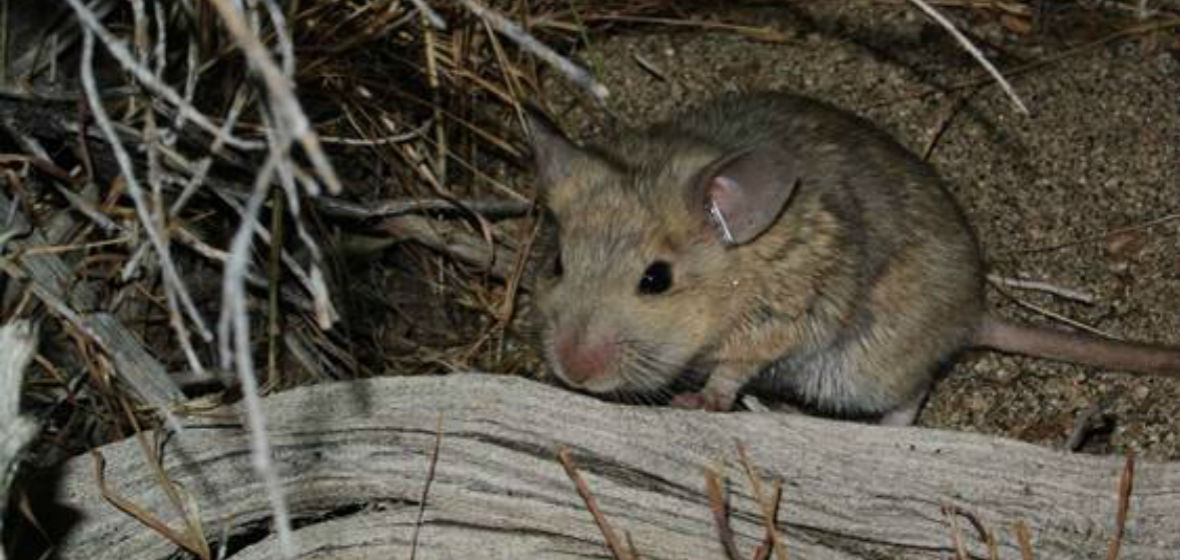A team of researchers at the University of Nevada, Reno has been studying the effects of climate change on the range movements of species, using a woodrat hybrid zone as a model system.
The team, including Professor Marjorie Matocq, Assistant Professor Kevin Shoemaker, and Postdoctoral Researcher Elizabeth Hunter, published a research paper, "Differential Effects of Climate on Survival Rates Drive Hybrid Zone Movement," online, Dec. 7, in the scientific journal Current Biology.
"This, at its very basis, is a long-term study to understand what factors influence the persistence of populations at their range edges and how they respond to changing conditions," Matocq, in the Department of Natural Resources and Environmental Sciences, said.
The findings of this study have allowed for a unique look into the mechanisms' underlying range movements of species and the complex relationship between climate and inter-species competition in determining range limits. A range limit is a species geographic boundary beyond which it does not occur.
The question of how animals will respond to climate change is a major area of research in ecology, with clear implications for biodiversity conservation.
"When conditions change, one way that species may respond is by shifting their ranges to follow more favorable conditions," Matocq said. "For example, if it's getting too hot or dry, species might move higher in elevation, or further north, but we understand very little about that process."
The interactions that animals have with other species at their range margins may strongly influence species distributions, but such interactions are difficult to study and therefore present a major barrier to understanding how species respond to climate change.
Matocq's woodrat data provided a unique opportunity to study the demography of two species at their range margins and how their populations responded to factors related to both climate and competition.
Strikingly, the researchers in the College of Agriculture, Biotechnology and Natural Resources uncovered a complex mechanism by which competition and climate worked together to favor one woodrat species over another, resulting in intrusion of the favored species into territory previously dominated by the other species.
{{RelatedPrograms}}
"This research is a really novel contribution, as it documents a response to climate change that is mediated by species interactions, illustrating something many ecologists have long suspected: species interactions are a really important part of the equation," Matocq said.
"Our woodrat study is very good for this question because the two species hybridize," Hunter said. "So, when we're interested in studying species interactions, hybridizing species are very good for that because they are potentially the most competitively interacting species you can find."
There are many different ways that animals can interact with each other, such as competing with one another for food or territories, but in the case of this research, they can also share their genetic information.
Matocq began working on this study in 2008, but has been working with and collecting data on the woodrat species since 1996. Hunter and Shoemaker are population modelers, and started collaborating with Matocq in 2016.
"This was a nice collaboration to use the data that Marjorie had collected and our expertise in building models to predict how these different factors can affect population survival probabilities, and how interactions cause species ranges to shift," Hunter said.
"We had genetic data for all individuals, and we also had information for estimating demographic parameters over time, so we had a unique opportunity to link the genetics to demographic rates like survival," Shoemaker said. "It is a very unique opportunity."
The team expressed the importance of understanding the effects of climate change on biodiversity.
"Take the example of polar bears, where it's very easy to see how climate could affect their populations, but we need to think beyond how hotter temperatures will affect polar bears directly," Hunter said. "They also interact with their prey species, and we need to understand how both of those populations are interacting in order to really know what is going to happen to polar bears."
The team is on the leading edge of coming up with ways to look at such interactions in order to make better predictions.
"It illustrates the importance of long-term datasets for addressing these major questions, and there are few examples of data sets that can do what we were able to do with this paper," Shoemaker said. "One of the things that we address in our paper is for the need for more data sets that can examine how species respond to climate change at a deeper level."
Shoemaker received his master's and doctorate degrees in conservation biology from the State University of New York, College of Environmental Science and Forestry. Hunter completed her master's degree in the same program. While there, she met Shoemaker, and the two developed an interest in doing these types of demographic models. Hunter obtained her doctorate degree at the University of Georgia.
Matocq received her bachelor's degree from California Polytechnic State University, San Luis Obispo, and received her master's degree from San Francisco State University. She completed her doctorate in 2000 at the University of California, Berkeley.












